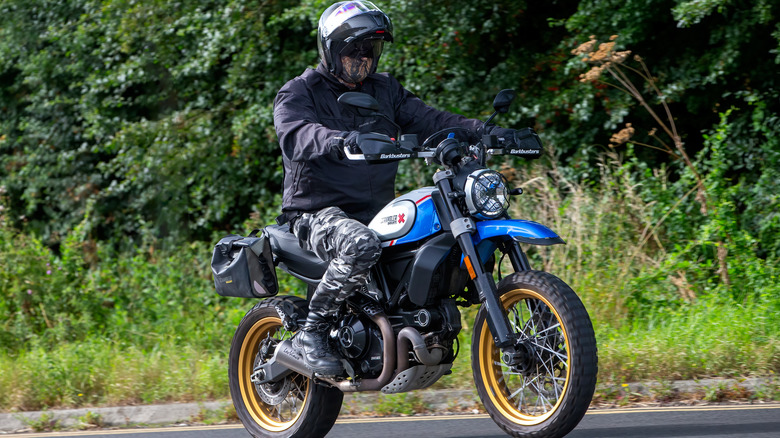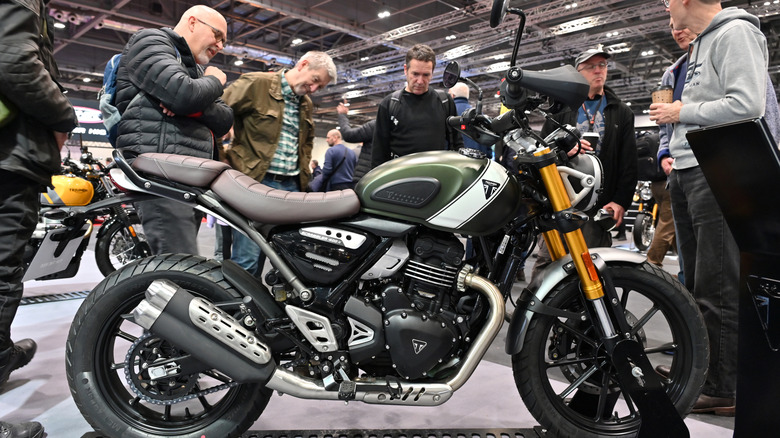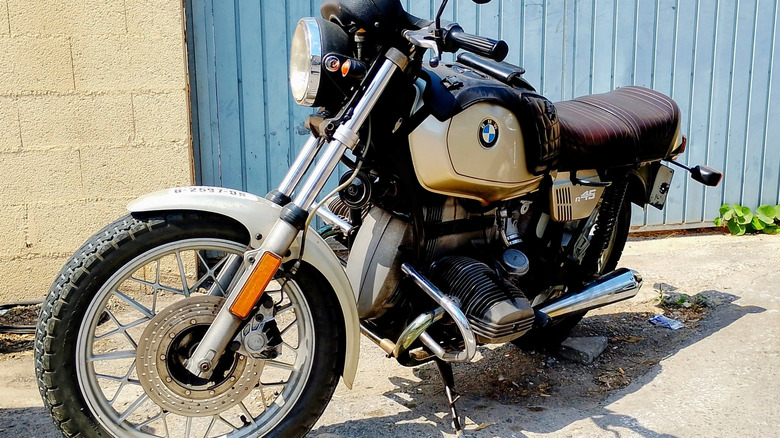
Scrambler motorcycles provide riders a perfect mix of old-school charm and go-anywhere attitude. These bikes have rugged looks and pared-down designs that remind some riders of a time when bikes were built not just for the road, but for whatever came after it. Whether it's a gravel trail or a dusty field, a scrambler can take you there and look good doing it. You won't find a scrambler overloaded with tech, but that's because they're made with a focus on the ride.
So, what exactly makes a motorcycle
a scrambler? There's actually no strict definition; scrambler is more of catch-all term or aesthetic than a strictly defined class of motorcycle like baggers or choppers. Scramblers are built with versatility in mind and are meant to bridge the gap between street bikes and full-fledged dirt bikes. While the term started with off-road races in England in the 1920s called "scrambles," the format and bikes built to run the races came to the United States by the '60s. They're made for riders who want a machine that doesn't mind getting dirty, but still works well on city streets. For many bikers, scrambler motorcycles are a perfect balance of style, simplicity, and performance.
Read more: 6 Of The Fastest Cruiser Motorcycles, Ranked By Top Speed
The Anatomy Of A Scrambler

Looking closely at a scrambler reveals plenty about its purpose-built nature. Most models use air-cooled, single- or twin-cylinder engines that focus more on torque than top speed. Scramblers often have long-travel suspensions, high ground clearance, and a light, sturdy frame. Large 18-inch rear and 21-inch front wheels are common, and are often shod with knobby, square-block tires for better grip off-road. Many also use seat suspension systems to smooth out rough rides. The high-mounted exhaust is another signature feature, helping the bike clear rocks and debris. A short padded seat, smaller tank, and minimal gauges complete the stripped-down, function-over-form setup.
While most scramblers can easily handle mild to moderate off-road conditions, they differ from true dual-sport bikes. Dual-sports are purpose-built for trails, often with taller suspensions, dedicated off-road tires, and larger fenders. Scramblers lean more toward versatility and basic styling, making them better suited for light off-roading and daily riding than hardcore trails, mud, or sand. Scramblers are made for both worlds; rugged enough to leave the pavement but still manageable for everyday use.
From Backyard Mods To Modern Machines

You couldn't always just show up and buy a scrambler off of a showroom floor. In the days of those early scrambles, riders would modify standard street bikes by swapping tires, modifying exhausts, and ditching unnecessary parts to reduce weight. This DIY culture led to a transatlantic boom for the point-to-point races by the 1950s and '60s. Manufacturers like BSA and Ducati jumped into the game, building and selling factory-made scramblers. Many modern scramblers blend a vintage look with updated running gear and performance. The Ducati Scrambler line is made up of nine different retro-styled models, with eight of them powered by a 903cc L-twin engine that makes 45 pound-feet of torque.
SlashGear reviewed the 2024 Scrambler Full Throttle and found that the "Scrambler's simple soul still shines through and nails the quintessential Ducati experience." If you're looking for a Ducati Scrambler alternative, brands like BMW and Triumph have their own offerings. For example, the Triumph Street Scrambler packs a 900cc twin engine in its retro frame and handles both city streets and dirt trails with ease. These bikes might look old-school, but they ride like modern machines.
Want the latest in tech and auto trends? Subscribe to our free newsletter for the latest headlines, expert guides, and how-to tips, one email at a time.
Read the original article on SlashGear.












